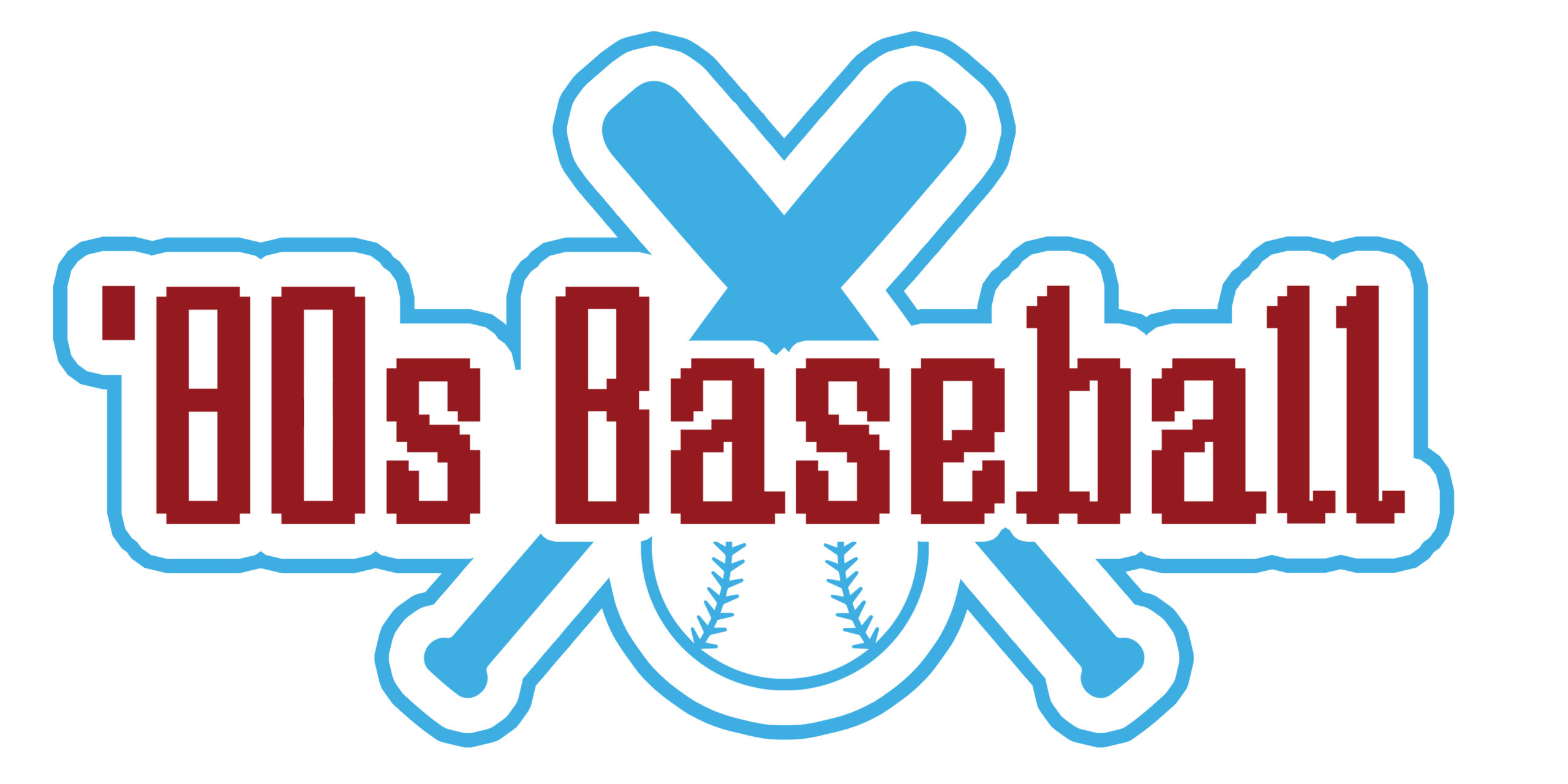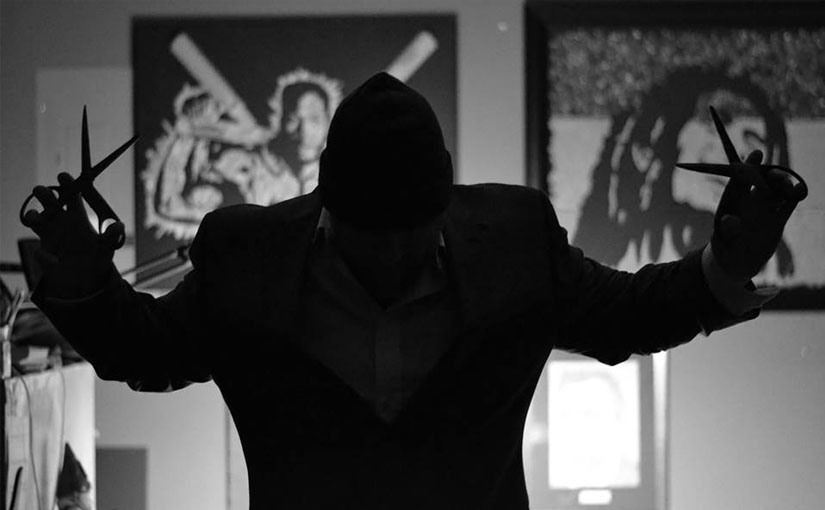Growing up, we learned to take care of our baseball cards because they would be valuable some day. We may even be able to sell them to pay for our kids’ college! Tim Carroll ignored that advice and the result is something wonderful.
Carroll cuts up baseball cards and turns them into unique works of art, which has gained him quite a bit of notoriety. Each piece takes between 45 to 60 hours to create, sometimes more. He recently took the time to talk with me about it.
’80s Baseball: I love your stuff. How did you get started and how did you come up with the idea to do what you do?
Tim Carroll: Thank you! I’ve always liked to draw, but a science conference trip to New Orleans with my wife back in 2009 changed my life. We had spent the day walking through galleries in the Quarter, so art was on my mind. It began to rain, and we walked into a convenience store. I picked up a magazine that had a very small blurb about the 100th anniversary of the T206 Wagner. I mentioned it to my wife, and let her know how amazing it would be to find one of those cards. She told me I should take all of the cards that were in our closet (from my late ’80’s childhood) and trade them for one. Obviously, it isn’t a quantity thing; it’s a quality issue. That day stuck with me, and when I returned home, I decided to create a T206 Honus Wagner tribute, but I didn’t want to simply draw or paint it.
I pulled out my commons, started finding cards that resembled the background color, and began to cut and glue them down. When the Wagner was finished, it was a nice sense of accomplishment. Looking back now on my “prototype”, it was hideous, lol, but I LOVE it. I compare it to my work now and make my testimony of how it takes hard work and dedication to get better at something.
’80s Baseball: I see you used to be a teacher. What did you teach and how did you transition to being a full-time artist?
Tim Carroll: I created the Wagner two months before I graduated from Ole Miss with my degree in elementary education. I had zero intent of it ever going past one piece. It was just something to do during a rainy spring back in 2009.
 Then I made another, and another. I began using other mediums, and people inquired about buying them. I began to teach, but the supplemental income from the art I was producing was nice. As I sharpened my skills, the workload increased. I was an elementary teacher for seven years, teaching everything from general 3rd grade to 2nd-5th grade mathematics. As time went on, I was taking on more and more commission work and it got to a point where I was spending every bit of my evenings and weekends working on art just to keep up.
Then I made another, and another. I began using other mediums, and people inquired about buying them. I began to teach, but the supplemental income from the art I was producing was nice. As I sharpened my skills, the workload increased. I was an elementary teacher for seven years, teaching everything from general 3rd grade to 2nd-5th grade mathematics. As time went on, I was taking on more and more commission work and it got to a point where I was spending every bit of my evenings and weekends working on art just to keep up.
I came to a career crossroads, so to speak, last year. My wife and I had been discussing the proper time to transition. There had been some planning along the way, but when the moment came, it was a leap of faith. I had been telling kids for many years to trust themselves, do what they love, (insert cliche here). What I was telling them wasn’t empty, though I meant every word I was saying.
We live this physical life once, and when I reflect back on my life later I want to say I have no regrets. Passing up the opportunity to use the talents and work ethic that He has given me would not have been the best move to make. So, I decided to practice what I was preaching to the kids, and with my wife’s unconditional blessing and support, I jumped.
 It has been an amazing last few months. I get to have breakfast (and sometimes lunch) with my wife throughout the year without it being rushed. I get to put everything away in the evenings and spend time with my kids like I wanted. My weekends are free to take road trips, lazy days hanging out, going to ballgames, and just simply being where I’m supposed to be while they are young. I loved teaching, and I miss having the direct positive impact on children’s lives that I did while I taught, but as a family-first guy…..this has been the coolest experience.
It has been an amazing last few months. I get to have breakfast (and sometimes lunch) with my wife throughout the year without it being rushed. I get to put everything away in the evenings and spend time with my kids like I wanted. My weekends are free to take road trips, lazy days hanging out, going to ballgames, and just simply being where I’m supposed to be while they are young. I loved teaching, and I miss having the direct positive impact on children’s lives that I did while I taught, but as a family-first guy…..this has been the coolest experience.
’80s Baseball: Upper Deck used your Ken Griffey Jr. piece. How did that happen? How cool was that to have a card company use your work that was made from their product?
 Tim Carroll: When I originally created the Griffey, Upper Deck shared it through their blog, and that was pretty much the extent of it, or so I thought. A few years later, during the 25th-anniversary celebration, I received an email from them asking if I still had the piece. They brought it with them as they traveled to the Industry Summit in Las Vegas, and then to Florida where it was signed by Junior himself.
Tim Carroll: When I originally created the Griffey, Upper Deck shared it through their blog, and that was pretty much the extent of it, or so I thought. A few years later, during the 25th-anniversary celebration, I received an email from them asking if I still had the piece. They brought it with them as they traveled to the Industry Summit in Las Vegas, and then to Florida where it was signed by Junior himself.
The reaction they were getting from the piece led them to commission several works from me, and I even had the pleasure of tagging along with them and working live at the Cleveland National in ’14, the Fall Expo in Toronto later that year, and even the NHL All-Star FanFair the following year in Columbus, OH.
For each event, I used Upper Deck cards to create pieces. It was a treat each time, having people show up to the table on Day 1 of each event and then popping in periodically to see the progress. I met so many people that I still converse with on social media. To boot, meeting Shaquille O’Neal at a bowling alley, Wayne Gretzky at the Hockey Hall of Fame, Pedro Martinez at the airport, Carey Price in downtown Columbus, among others (in non-signing environments, no less) was something that would’ve never happened without the Griffey piece.
’80s Baseball: Basic question but I need to ask: Where do you get all the cards? About how many do you have on hand at any given time?
Tim Carroll: I started with just the cards I had from my childhood, which was no more than 10-15 thousand. Several people I met online offered, and continue to offer, support by sending cards should I need a specific set, brand, team, etc.
 A local guy that once owned a card shop donated over 150 thousand at once, and a couple of collectors that needed to clear space also donated their junk era portions. There have been several generous people that have given or offered smaller lots. I appreciate each and every one of them. Add that with a few cases of 87-90 Topps, Donruss, and Fleer that I bought, and I am now up to about 450K in my garage studio. So, for anyone wondering, I’m good on commons for now!
A local guy that once owned a card shop donated over 150 thousand at once, and a couple of collectors that needed to clear space also donated their junk era portions. There have been several generous people that have given or offered smaller lots. I appreciate each and every one of them. Add that with a few cases of 87-90 Topps, Donruss, and Fleer that I bought, and I am now up to about 450K in my garage studio. So, for anyone wondering, I’m good on commons for now!
’80s Baseball: Aside from commissioned work, what goes into your decision-making process as to who you’re going to work on next?
 That’s a great question and one that I’m not sure I have an answer for. It’s more of a feeling or desire, I guess. I have a list of pieces that I want to make, and cards get added to that list all the time. I have even started several of them. I try to finish one of those ‘just because’ pieces in-between finishing commissions. I do that in an attempt to build my own collection of originals, although all are available. I’ll begin something like a 1954 Topps Ernie Banks and then commission work will take over. I’ll then start a Jackie Robinson Leaf rookie or another early Mickey Mantle. Repeat. I have so many that I have started that I need to finish! That’s another bonus to doing this full-time. I have the time to get to some of those non-commissioned pieces, and I have been able to strike a few off the list.
That’s a great question and one that I’m not sure I have an answer for. It’s more of a feeling or desire, I guess. I have a list of pieces that I want to make, and cards get added to that list all the time. I have even started several of them. I try to finish one of those ‘just because’ pieces in-between finishing commissions. I do that in an attempt to build my own collection of originals, although all are available. I’ll begin something like a 1954 Topps Ernie Banks and then commission work will take over. I’ll then start a Jackie Robinson Leaf rookie or another early Mickey Mantle. Repeat. I have so many that I have started that I need to finish! That’s another bonus to doing this full-time. I have the time to get to some of those non-commissioned pieces, and I have been able to strike a few off the list.
Find Tim Carroll
You can find Tim and more examples of his work on his website, on Twitter, Instagram, and on Facebook.
But Wait, There’s More!
Lest you think Tim’s work is limited to just cutting up baseball cards, think again. He works with all different kinds of materials.






